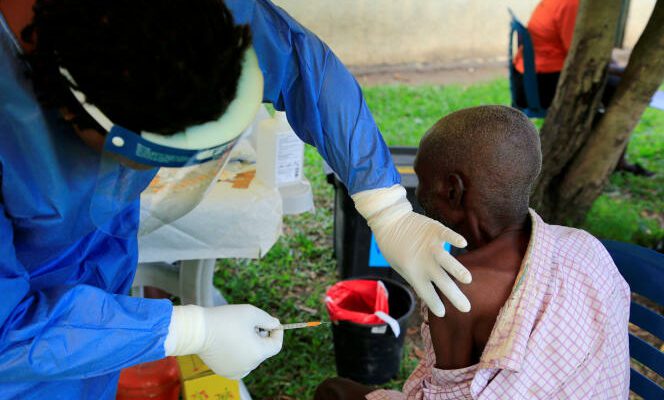It took less than four months to contain the Ebola virus disease (EVD) outbreak that broke out in Uganda on September 20, 2022. Officially declared over by the World Health Organization (WHO) on January 11 after forty-two days without any new case declared, this epidemic outbreak joins the list of forty epidemics that have affected the African continent since 1976. With 142 confirmed cases (and around twenty probable cases) and 55 declared deaths, the rate of lethality of 39 to 47% is among the lowest in recent years – without taking into account people with no or very few symptoms who, according to studiesmay represent 10 to 12% of people infected with the virus.
A certain victory for the Ugandan health authorities, which nevertheless leaves a taste of unfinished research, since the end of the epidemic marks the end of a large-scale clinical trial including three vaccines targeted against the strain known as ” Sudan” of EVD. The WHO had indeed accomplished a tour de force by enabling the development, submission and validation of a test protocol as well as the shipment of more than 5,000 doses of three different types of vaccines to Uganda… All in just sixty- nineteen days. An unprecedented mobilization of global health authorities and field actors in Uganda. “As the epidemic was quickly brought under control, we will have information on the tolerance of the vaccine and on the lifespan of the antibodies, which are important elements in terms of vaccine strategy, but the results will not make it possible to say whether the vaccines are effective against the disease”explains Eric Delaporte, professor specializing in infectious diseases at the University of Montpellier.
Despite the speed of these steps, it is therefore not the vaccines that have succeeded in stopping the spread of the virus, but above all the efforts put into tracing contact cases – in particular during unprotected funeral rituals, at the hospital or among traditional practitioners – the implementation of effective barrier gestures, and the overall improvement of care. Despite everything, vaccines remain a strategic tool for future epidemics, and in particular thanks to their preventive dimension.
Three vaccine regimens tested
As of 2019, two EVD vaccines have already been prequalified by WHO, meaning they meet the organization’s quality, safety and efficacy standards and can be used in countries at risk. But they are targeting the so-called “Zaire” strain of the disease, which notably caused the largest EVD epidemic ever observed, from 2013 to 2016 in West Africa, but also that from 2018 to 2020 in the Democratic Republic of Congo ( ground floor). These vaccines are considered ineffective against the Sudan strain, which has so far mainly affected Sudan and Uganda during smaller epidemics. Nor do they target the three other strains listed: Bundibugyo, Reston and Taï Forest.
You have 63.53% of this article left to read. The following is for subscribers only.
